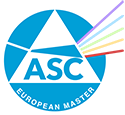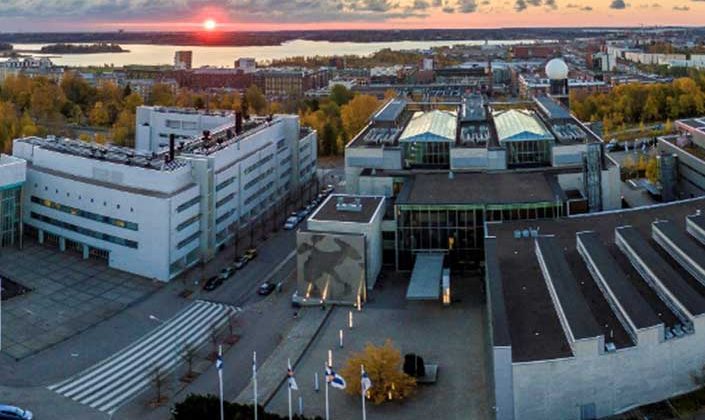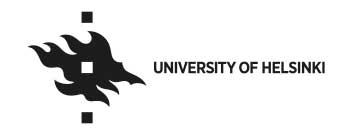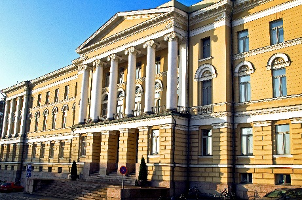Helsinki, Finland
The University of Helsinki
A FEW FIGURES
- 30,800 degree students
- 200,000 alumni around the world
- 11 faculties
- 4 campuses
- 36 master’s programmes in English
- 96 bachelor’s and master’s programmes
- 4 doctoral schools
- 32 doctoral programmes
The University of Helsinki, founded in 1640, is one of the world’s leading universities for multidisciplinary research. At the end of 2020, it was ranked among the top 0.5 % of the world’s research universities. E.g. its Shanghai ranking was 63. The university has an international academic community of 40,000 students and staff members.
The University of Helsinki has the widest range of disciplines in Finland. The number of faculties is eleven and there are 38,000 degree students and 7,400 staff. The number of degrees taken each year is 4,200, of which 350 are doctorates. The University concentrates on high-level scientific research and researcher education. Scientific research is also the basis of the teaching provided by the University.
According to the current strategy of the University of Helsinki internationalisation is one of the key areas of development. The University has adopted an “International Action Plan 2004-2006” according to which international mobility of students and staff is one of the key elements in the University’s international efforts. In addition to promotion of mobility the University also promotes “Internationalisation at Home” in order to internationalise its campuses. Active participation in European educational and research programs is a cornerstone of the implementation of the University of Helsinki internationalisation policy.
DEPARTMENT OF CHEMISTRY
The Department of Chemistry is the leading hub of chemistry teaching and research in Finland. The Department’s research is internationally recognised and is carried out within three research programmes, namely materials chemistry, molecular science, and synthesis and analysis.
The Department of Chemistry is a part of the Faculty of Science situated outside the city center in Kumpula campus. The department carries out research in chemistry and its applications at an international level and provides academic teaching based on high quality research. There are 15 professors at the department. The study programs are focused on experimental, theoretical and computational chemistry, from small molecules to macromolecules. Research topics involve synthesis of new molecules, physicochemical properties of organic and inorganic materials, analytical methods, photochemistry, molecular spectroscopy, atmospheric chemistry, layer-by-layer deposition, gas kinetics, catalysis etc. Training provides high quality education on the bachelor, master and doctoral levels and prepares students for their careers in academia and industry.
Main research areas are in
- synthetic chemistry, including methods development and target structures both in the organic and inorganic fields, and drug discovery applications; green chemistry considerations motivate a substantial proportion of synthetic chemistry research,
- polymer chemistry,
- radiochemistry,
- materials chemistry,
- analytical chemistry,
- computational chemistry and
- molecular science and atmospheric chemistry
The staff comprises about 200 individuals, most of whom are actively involved in research.
There are 14 professors in the Department in six laboratories, where undergraduates perform their advanced and degree studies for M.Sc., and postgraduate studies for Ph.D.
Spectroscopy expertise in the Department is present in the Laboratory of organic chemistry (high field NMR including HPLC interfaced techniques; GC/MS/MS); in the Laboratory of polymer chemistry (solid state NMR); in the Laboratory of Physical chemistry (FTIR, Raman, LIF, theoretical molecular spectroscopy); and in the Laboratory of inorganic chemistry (X-ray crystallography). At the Department of Chemistry degrees are offered and research is carried out in the fields of analytical, inorganic, organic and physical chemistry and in radiochemistry, polymer chemistry and in chemistry teacher education.
The strongest areas of specialization are green chemistry, materials chemistry, computational chemistry, synthetic chemistry and chemical analysis. The amount of papers published in peer-reviewed international journals is about 200 per year. The departmental staff including teaching and research personnel, docents (assistant professors with part-time teaching responsibilities), externally funded researchers in various projects, and administrative and technical staff is about 300. There are 14 professors and several other senior level teachers.
A primary goal of the research is to educate highly qualified experts for industry and research institutes. Basic chemistry courses are given to students in the Laboratories of Inorganic, Organic and Physical Chemistry. Upon completion of basic studies, students go on to specialize in either analytical, inorganic, organic, physical, polymer or radiochemistry. According to current syllabus the first year students begin their studies with inorganic chemistry including lectures and laboratory exercises. The second year is mostly devoted to organic chemistry and the third year to physical chemistry. Language studies and minor subject studies go along these studies. During the fourth and fifth year the students specialize in one of the above mentioned areas. Courses in various fields of spectroscopy are given in medium and advanced level, several of them in English.






